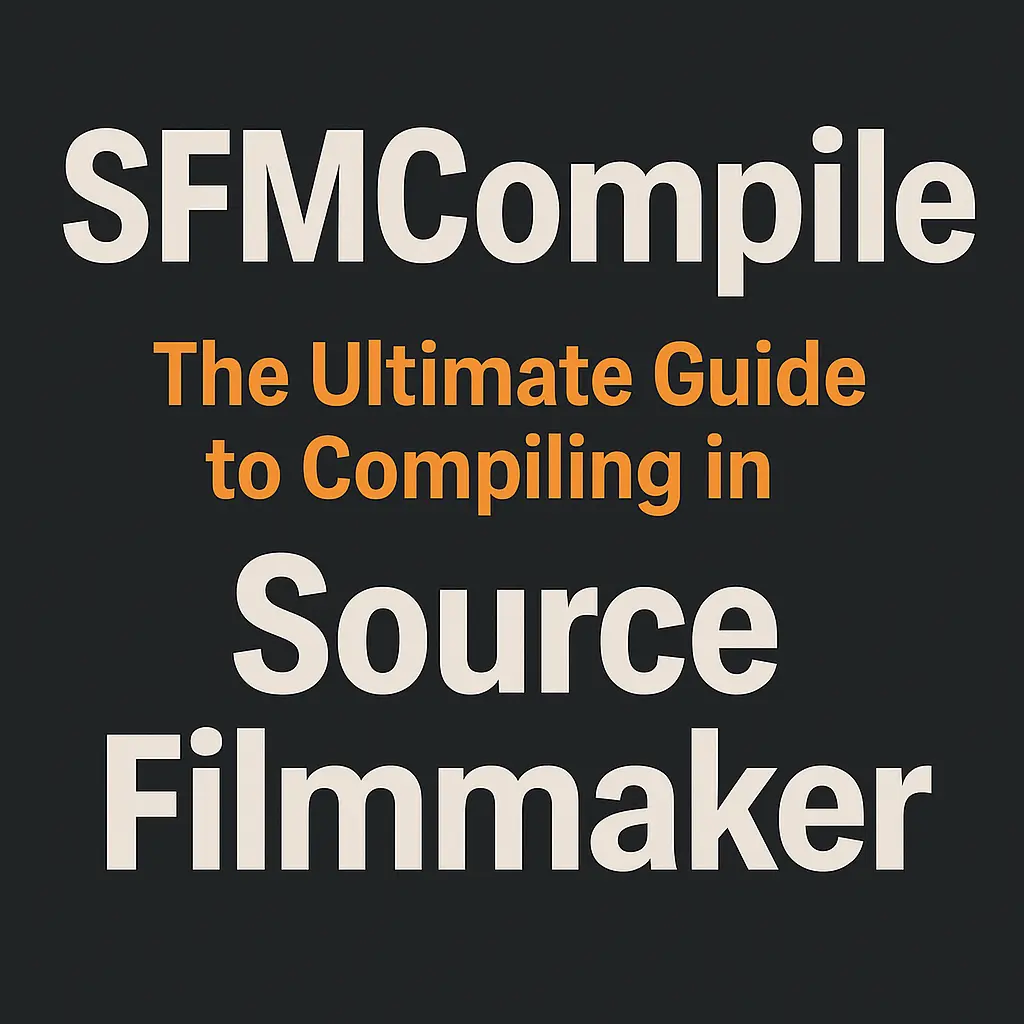Keyword: SFM Compile
Related terms: Source Filmmaker, SFM QC file, SFM animation, model compiling, Source engine, SFM workflow
Source Filmmaker (SFM) has empowered creators with Hollywood-style animation capabilities using the Source Engine. However, to get the most out of SFM, creators often need to import custom models, textures, and animations. That’s where SFM Compile comes into play.
Whether you’re a beginner trying to make your first animated short or a seasoned animator importing high-quality assets, understanding the SFM compile process is crucial for unlocking the full power of Source Filmmaker.
In this comprehensive guide, we’ll cover everything you need to know about SFM compile — from what it is to how to do it effectively.
What is SFM Compile?
SFM Compile is the process of converting raw assets (like 3D models, textures, and skeletons) into formats that SFM can use for animation. This involves using Source engine tools like studiomdl to compile .SMD or .DMX files into .MDL model files readable by SFM.
This process ensures:
-
Models are optimized for SFM’s rendering engine.
-
Physics, collision models, and animations behave as expected.
-
The assets are available in the SFM viewport for animation.
Why is SFM Compile Important?
Without compiling, SFM can’t understand or render custom models. Here’s why compiling is essential:
| Feature | Why it Matters |
|---|---|
| ✅ Custom Models | Lets you use your own characters and props. |
| ✅ Texture Support | Maps textures correctly for realistic rendering. |
| ✅ Physics & Animation | Adds rigging, bone weights, and motion to models. |
| ✅ Optimized Performance | Reduces lag and rendering errors. |
| ✅ Compatibility | Ensures assets load in SFM without breaking. |
The SFM Compile Workflow
Compiling assets for SFM involves multiple steps and tools. Here’s the typical workflow:
1. Prepare Your Assets
Before compiling, ensure your assets are properly set up in your 3D modeling software (like Blender or Maya).
-
Modeling: Create a mesh with good topology.
-
Rigging: Add bones and weight paint.
-
UV Mapping: Lay out UVs for texturing.
-
Exporting: Export to
.SMDor.DMX.
Tip: Use Blender Source Tools to export Source-ready files.
2. Create a QC File
The .QC file is a script that tells the compiler how to build the model.
Example QC file:
$modelname "custom/character.mdl"
$body mybody "character_reference.smd"
$cdmaterials "models\custom"
$sequence idle "idle.smd" loop ACT_IDLE 1
$collisionmodel "character_physics.smd" {
$mass 60
}
This defines:
-
The output path for the compiled model.
-
The mesh and animations to use.
-
The collision settings and physical properties.
3. Use the Compile Tools
To compile the QC file, use the studiomdl.exe tool included with Source SDK.
Command-line example:
studiomdl.exe mymodel.qc
Note: Make sure the Source SDK path is properly set in environment variables or your script.
After successful compilation, .MDL, .VTX, .PHY, and .ANI files will be generated.
4. Place Compiled Files in SFM
Move the compiled files to your SFM directory:
Steam\steamapps\common\SourceFilmmaker\game\usermod\models\yourfolder\
Textures go into:
Steam\steamapps\common\SourceFilmmaker\game\usermod\materials\yourfolder\5. Load Model in SFM
-
Open Source Filmmaker.
-
Right-click in the viewport > “Create Animation Set for New Model.”
-
Search for your model name and load it.
If everything was done correctly, your custom model will appear ready to animate.
🗃️ SFM Compile File Types
| File Extension | Description |
|---|---|
.QC |
Script for compiling |
.SMD/.DMX |
Source model/animation file |
.MDL |
Compiled model file |
.VTX |
Vertex data |
.PHY |
Physics model |
.VVD |
Vertex animation data |
.VMT/.VTF |
Material and texture files |
Troubleshooting Common Compile Errors
| Error Message | Solution |
|---|---|
| “Unresolved external bone” | Check bone names across SMD/DMX files |
| “Can’t load model file” | Verify paths and output folder permissions |
| “Material not found” | Make sure VMT/VTF files are in the right location |
| “Too many vertices” | Reduce mesh complexity or use LODs |
Quote: “Compiling is like cooking — if your recipe (QC file) is bad, your final dish (model) won’t taste right.”
Advanced SFM Compile Techniques
✅ Batch Compiling
Use scripts or batch files to compile multiple QC files at once.
Windows Batch Example:
for %%f in (*.qc) do (
studiomdl.exe %%f
)
✅ Custom Physics
Tweak your physics .SMD to simulate weight and impact more realistically.
✅ Level of Detail (LOD)
Improve performance by compiling multiple versions of a model for different distances.
Case Study: Creating a Custom Character for SFM
A Source Filmmaker creator wanted to animate a fan-made Overwatch character. They followed these steps:
-
Modeled and rigged in Blender.
-
Exported as
.SMDwith Source Tools. -
Wrote a QC file specifying body and animation sequences.
-
Compiled using
studiomdl. -
Placed model in SFM
usermodfolder. -
Successfully animated the character inside SFM.
Result: The animation was featured in a community showcase!
Helpful Tools and Resources
Conclusion
SFM Compile is the backbone of custom content in Source Filmmaker. Once you understand the workflow—from exporting assets to writing QC files and compiling models—you unlock the ability to bring any 3D creation to life in stunning animations.
With the right tools, some practice, and a pinch of patience, you can turn your ideas into cinematic stories using your own assets in SFM.
